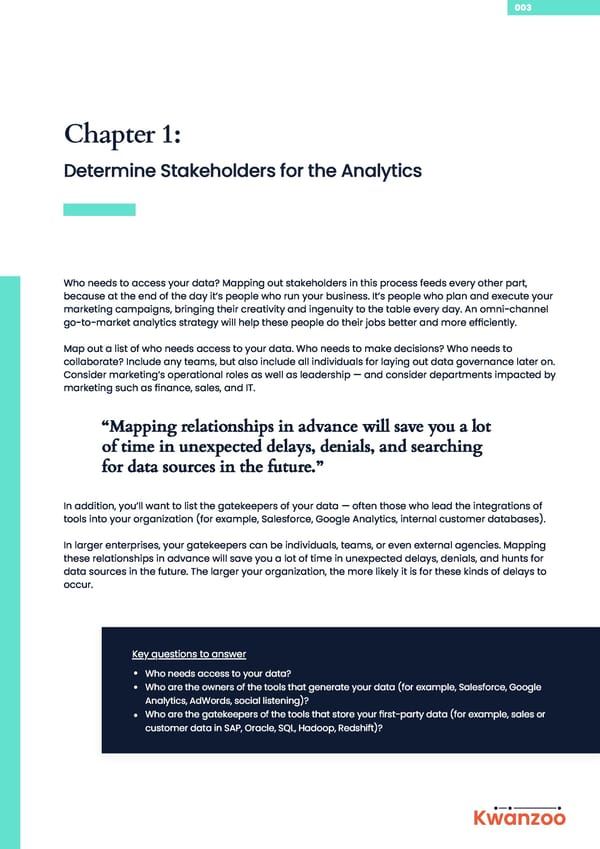003 Chapter 1: Determine Stakeholders for the Analytics Who needs to access your data? Mapping out stakeholders in this process feeds every other part, because at the end of the day it’s people who run your business. It’s people who plan and execute your marketing campaigns, bringing their creativity and ingenuity to the table every day. An omni-channel go-to-market analytics strategy will help these people do their jobs better and more efficiently. Map out a list of who needs access to your data. Who needs to make decisions? Who needs to collaborate? Include any teams, but also include all individuals for laying out data governance later on. Consider marketing’s operational roles as well as leadership — and consider departments impacted by marketing such as finance, sales, and IT. “Mapping r“Mapping relaelatiotionships in advnships in advance wance will saill savve ye you a lou a lot ot of time in uneof time in unexpxpecteected delaysd delays, de, denialsnials, and sear, and searching ching fofor dar data sourta sources in the futurces in the futuree.” .” In addition, you’ll want to list the gatekeepers of your data — often those who lead the integrations of tools into your organization (for example, Salesforce, Google Analytics, internal customer databases). In larger enterprises, your gatekeepers can be individuals, teams, or even external agencies. Mapping these relationships in advance will save you a lot of time in unexpected delays, denials, and hunts for data sources in the future. The larger your organization, the more likely it is for these kinds of delays to occur. Key questions to answer Who needs access to your data? Who are the owners of the tools that generate your data (for example, Salesforce, Google Analytics, AdWords, social listening)? Who are the gatekeepers of the tools that store your first-party data (for example, sales or customer data in SAP, Oracle, SQL, Hadoop, Redshift)? Kwanzoo
 2. Revenue Operations Analytics Page 3 Page 5
2. Revenue Operations Analytics Page 3 Page 5